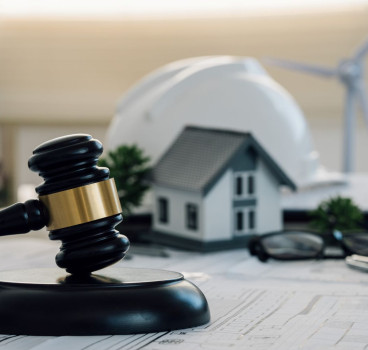How the construction sector is embracing sustainability in 2026
The UK construction sector has long played a central role in the built environment — but in 2026, it’s also becoming a key player in the fight against climate change. With growing pressure from regulators, clients, and society as a whole, construction companies are rethinking traditional practices and embracing sustainability at every stage of the project lifecycle.
From government-led policies to cutting-edge materials and innovative technologies, the movement towards a greener, low-carbon construction industry is no longer optional — it’s a business imperative. For UK firms looking to stay competitive, win public contracts, and future-proof their operations, sustainable construction is the way forward.
Here’s how the construction sector in the UK is embracing sustainability in 2026.
1. Regulations and Policies Are Driving Change
The UK Government has made significant legislative strides to reduce the environmental impact of the construction sector. Key among these is the Future Homes Standard, which will require all new homes built from 2025 to produce 75–80% less carbon emissions, and Building Regulations Part L, which focuses on energy performance and carbon efficiency.
Additionally, Part Z — a proposed amendment — seeks to mandate the measurement and reporting of embodied carbon in all construction projects, forcing developers and contractors to account for emissions from materials and processes.
The Construction Playbook and the government’s Net Zero Strategy further solidify sustainability as a contractual requirement, especially for public sector tenders. This has pushed many UK firms to adopt greener practices not just for compliance, but also to stay eligible for major procurement opportunities.
2. Sustainable Materials and the Rise of the Circular Economy
Traditional construction materials such as concrete and steel are responsible for vast carbon emissions. In 2026, the shift toward low-carbon alternatives is accelerating.
Innovative materials like low-carbon concrete and cross-laminated timber (CLT) are being used more frequently. Meanwhile, the reuse of materials — including reclaimed bricks, recycled steel, and repurposed aggregates — is becoming a mainstream practice rather than a niche effort.
The circular economy model is also gaining ground. This involves designing buildings in a way that materials can be recovered and reused at the end of their life cycle, reducing waste and resource consumption. For instance, some firms are designing “buildings for disassembly” to allow for easier recycling of structural elements.
Construction companies that adopt these strategies are finding that not only do they reduce their carbon footprint, but they can also cut costs and offer greater value to environmentally conscious clients.
One example of this approach in action is Garden Rooms 365, a UK-based garden room contractor that prioritises sustainable building practices. They use responsibly sourced timber, insulation made from recycled materials, and construction methods that minimise on-site waste. By building modular, prefabricated structures, Garden Rooms 365 ensures components can be reused or recycled, aligning with the principles of the circular economy. Their commitment reflects a broader industry trend toward greener, more resource-efficient construction.
3. Technology and Data: The Backbone of Green Construction
Sustainability is being supercharged by digital innovation. In 2026, many UK construction companies are using Building Information Modelling (BIM) not just for clash detection or cost estimation, but to improve energy efficiency throughout a building’s lifecycle.
Digital twins — virtual replicas of physical buildings — enable real-time monitoring of energy use and emissions, offering predictive insights for maintenance and performance optimisation.
Carbon tracking software, smart meters, and AI-driven resource planning are also helping companies monitor and report environmental performance with accuracy and ease. These tools are essential not only for regulatory compliance but for stakeholders looking to measure a company’s ESG (Environmental, Social, and Governance) performance.
In short, data is no longer just for engineers and architects. It’s now a critical asset for sustainability and long-term profitability.
4. Energy Efficiency and Renewable Solutions
Modern construction in the UK has embraced energy efficiency as a key priority. This includes the adoption of passive design principles, such as building orientation, insulation, and natural ventilation to reduce energy demand.
On the mechanical side, buildings are increasingly being equipped with air source heat pumps, solar PV systems, and energy-efficient lighting and HVAC systems.
Retrofitting is another booming area. Thousands of older homes and commercial buildings across the UK are undergoing energy upgrades to meet new performance standards, contributing to national decarbonisation goals.
Forward-thinking contractors are not just installing systems but integrating them into the architectural design from day one, creating smarter, cleaner, and more efficient spaces.
5. Sustainability as a Marketing & Business Growth Opportunity
While the shift to sustainability is often driven by compliance and regulation, it also presents a powerful opportunity for marketing a construction business in the UK.
In 2026, both B2B clients and homeowners are increasingly seeking eco-conscious contractors. Having green credentials — such as BREEAM certification, ISO 14001 compliance, or carbon offset partnerships — can be a strong differentiator in a crowded market.
Case studies that highlight sustainable practices, waste reduction, and energy efficiency are becoming central to marketing campaigns. Firms are now showcasing their commitment through website content, social media, and tender submissions, positioning themselves as modern, responsible, and forward-thinking.
A Sector in Transformation
The construction industry in the UK is undergoing a profound transformation in 2026. What was once viewed as a carbon-heavy sector is rapidly becoming a leader in sustainability innovation.
From greener materials and smart technologies to workforce training and strategic marketing, UK construction companies are proving that environmental responsibility and commercial success can go hand in hand.
As regulations tighten and clients grow more eco-aware, now is the time for companies to invest in sustainable strategies — not just to survive, but to thrive. Whether you're a contractor, supplier, or developer, embracing sustainability today means building a stronger, more resilient business for tomorrow.
Additional Blogs

How construction can cut Its carbon footprint by caring for soil
Soil is often dismissed as mere dirt, but it is one of the planet’s most powerful carbon stores, holding more than all of the world’s forests combined. Yet in our rush to build, pave and develop, we...
Read moreWhat is bridging damp? How it happens and how to fix it
Bridging damp happens when moisture finds a path around the building’s damp-proof course (DPC) so it reaches your internal walls and skirting. If you see damp patches rising above the skirting or...
Read more

The silent death of the fixed-price contract
For decades, the fixed-price contract has been the backbone of construction procurement. It promised certainty with a defined scope, an agreed sum and a clear transfer of risk from client to...
Read more